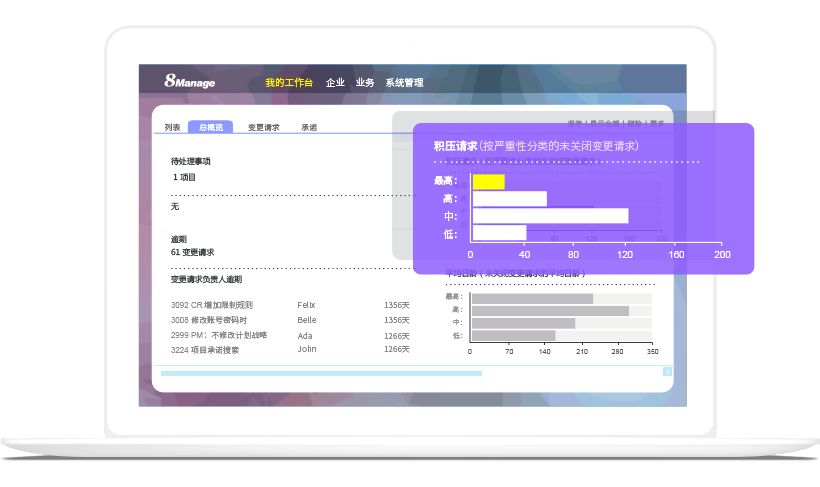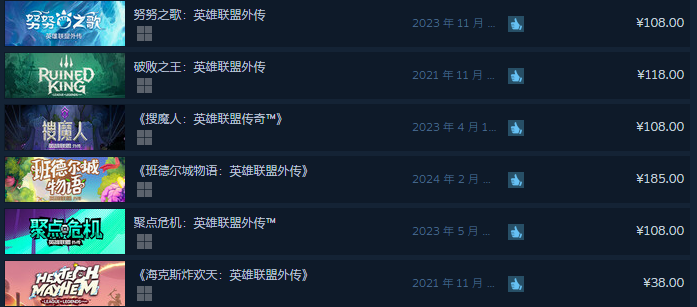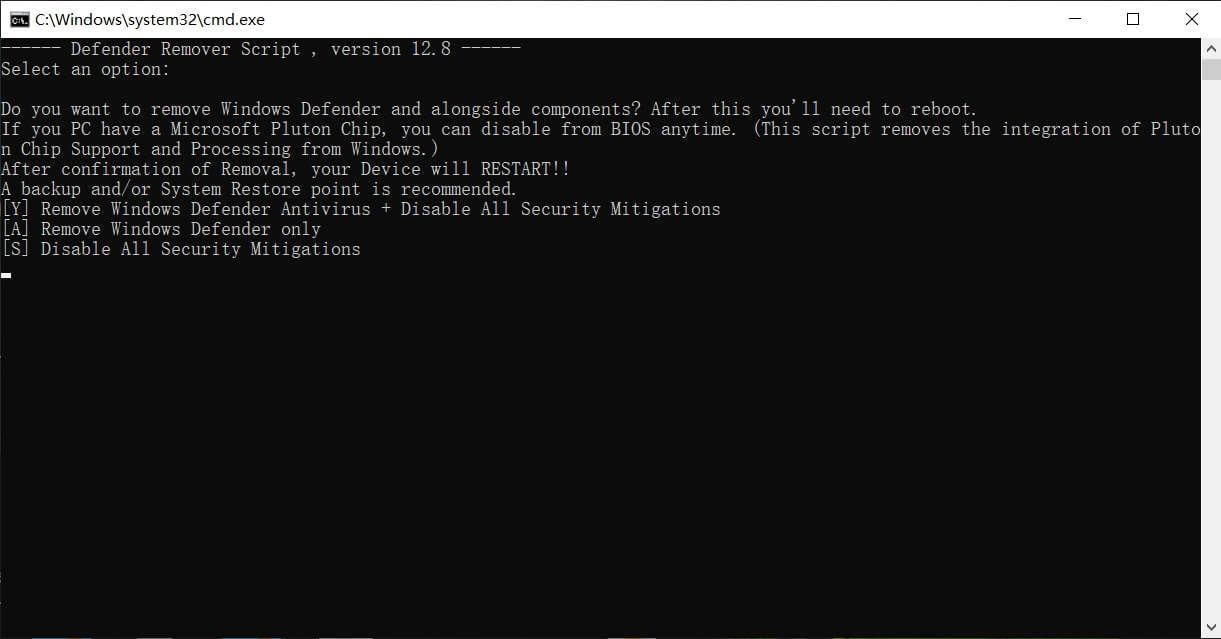一、chrome.system.display
使用 system.display API 查询展示元数据。
权限
system.display
类型
ActiveState
Chrome 117 及更高版本
用于指示系统是否检测到和使用显示屏的枚举。如果系统未检测到显示屏(可能断开连接,或因睡眠模式等原因而被视为断开连接),则显示屏将被视为“非活动状态”。例如,此状态用于在所有显示屏断开连接时保留现有显示屏。
chrome.system.display | API | Chrome for Developers
二、chrome.system.display c++接口定义:
1、system_display.idl
extensions\common\api\system_display.idl
// Copyright 2013 The Chromium Authors
// Use of this source code is governed by a BSD-style license that can be
// found in the LICENSE file.
// Use the <code>system.display</code> API to query display metadata.
namespace system.display {
dictionary Bounds {
// The x-coordinate of the upper-left corner.
long left;
// The y-coordinate of the upper-left corner.
long top;
// The width of the display in pixels.
long width;
// The height of the display in pixels.
long height;
};
dictionary Insets {
// The x-axis distance from the left bound.
long left;
// The y-axis distance from the top bound.
long top;
// The x-axis distance from the right bound.
long right;
// The y-axis distance from the bottom bound.
long bottom;
};
dictionary Point {
// The x-coordinate of the point.
long x;
// The y-coordinate of the point.
long y;
};
dictionary TouchCalibrationPair {
// The coordinates of the display point.
Point displayPoint;
// The coordinates of the touch point corresponding to the display point.
Point touchPoint;
};
dictionary TouchCalibrationPairQuad {
// First pair of touch and display point required for touch calibration.
TouchCalibrationPair pair1;
// Second pair of touch and display point required for touch calibration.
TouchCalibrationPair pair2;
// Third pair of touch and display point required for touch calibration.
TouchCalibrationPair pair3;
// Fourth pair of touch and display point required for touch calibration.
TouchCalibrationPair pair4;
};
dictionary DisplayMode {
// The display mode width in device independent (user visible) pixels.
long width;
// The display mode height in device independent (user visible) pixels.
long height;
// The display mode width in native pixels.
long widthInNativePixels;
// The display mode height in native pixels.
long heightInNativePixels;
// The display mode UI scale factor.
[deprecated="Use $(ref: displayZoomFactor)"] double? uiScale;
// The display mode device scale factor.
double deviceScaleFactor;
// The display mode refresh rate in hertz.
double refreshRate;
// True if the mode is the display's native mode.
boolean isNative;
// True if the display mode is currently selected.
boolean isSelected;
// True if this mode is interlaced, false if not provided.
boolean? isInterlaced;
};
// Layout position, i.e. edge of parent that the display is attached to.
enum LayoutPosition { top, right, bottom, left };
dictionary DisplayLayout {
// The unique identifier of the display.
DOMString id;
// The unique identifier of the parent display. Empty if this is the root.
DOMString parentId;
// The layout position of this display relative to the parent. This will
// be ignored for the root.
LayoutPosition position;
// The offset of the display along the connected edge. 0 indicates that
// the topmost or leftmost corners are aligned.
long offset;
};
// EDID extracted parameters. Field description refers to "VESA ENHANCED
// EXTENDED DISPLAY IDENTIFICATION DATA STANDARD (Defines EDID Structure
// Version 1, Revision 4)" Release A, Revision 2 September 25, 2006.
// https://www.vesa.org/vesa-standards
dictionary Edid {
// 3 character manufacturer code. See Sec. 3.4.1 page 21. Required in v1.4.
DOMString manufacturerId;
// 2 byte manufacturer-assigned code, Sec. 3.4.2 page 21. Required in v1.4.
DOMString productId;
// Year of manufacturer, Sec. 3.4.4 page 22. Required in v1.4.
long yearOfManufacture;
};
// An enum to tell if the display is detected and used by the
// system. The display is considered 'inactive', if it is not
// detected by the system (maybe disconnected, or considered
// disconnected due to sleep mode, etc). This state is used to keep
// existing display when the all displays are disconnected, for
// example.
enum ActiveState { active, inactive };
dictionary DisplayUnitInfo {
// The unique identifier of the display.
DOMString id;
// The user-friendly name (e.g. "HP LCD monitor").
DOMString name;
// NOTE: This is only available to Chrome OS Kiosk apps and Web UI.
Edid? edid;
// Chrome OS only. Identifier of the display that is being mirrored if
// mirroring is enabled, otherwise empty. This will be set for all displays
// (including the display being mirrored).
DOMString mirroringSourceId;
// Chrome OS only. Identifiers of the displays to which the source display
// is being mirrored. Empty if no displays are being mirrored. This will be
// set to the same value for all displays. This must not include
// |mirroringSourceId|.
DOMString[] mirroringDestinationIds;
// True if this is the primary display.
boolean isPrimary;
// True if this is an internal display.
boolean isInternal;
// True if this display is enabled.
boolean isEnabled;
// Active if the display is detected and used by the system.
ActiveState activeState;
// True for all displays when in unified desktop mode. See documentation
// for $(ref:enableUnifiedDesktop).
boolean isUnified;
// True when the auto-rotation is allowed. It happens when the device is in
// a tablet physical state or kSupportsClamshellAutoRotation is set.
// Provided for ChromeOS Settings UI only. TODO(stevenjb): Remove when
// Settings switches to a mojo API.
[nodoc] boolean? isAutoRotationAllowed;
// The number of pixels per inch along the x-axis.
double dpiX;
// The number of pixels per inch along the y-axis.
double dpiY;
// The display's clockwise rotation in degrees relative to the vertical
// position.
// Currently exposed only on ChromeOS. Will be set to 0 on other platforms.
// A value of -1 will be interpreted as auto-rotate when the device is in
// a physical tablet state.
long rotation;
// The display's logical bounds.
Bounds bounds;
// The display's insets within its screen's bounds.
// Currently exposed only on ChromeOS. Will be set to empty insets on
// other platforms.
Insets overscan;
// The usable work area of the display within the display bounds. The work
// area excludes areas of the display reserved for OS, for example taskbar
// and launcher.
Bounds workArea;
// The list of available display modes. The current mode will have
// isSelected=true. Only available on Chrome OS. Will be set to an empty
// array on other platforms.
DisplayMode[] modes;
// True if this display has a touch input device associated with it.
boolean hasTouchSupport;
// True if this display has an accelerometer associated with it.
// Provided for ChromeOS Settings UI only. TODO(stevenjb): Remove when
// Settings switches to a mojo API. NOTE: The name of this may change.
[nodoc] boolean hasAccelerometerSupport;
// A list of zoom factor values that can be set for the display.
double[] availableDisplayZoomFactors;
// The ratio between the display's current and default zoom.
// For example, value 1 is equivalent to 100% zoom, and value 1.5 is
// equivalent to 150% zoom.
double displayZoomFactor;
};
dictionary DisplayProperties {
// Chrome OS only. If set to true, changes the display mode to unified
// desktop (see $(ref:enableUnifiedDesktop) for details). If set to false,
// unified desktop mode will be disabled. This is only valid for the
// primary display. If provided, mirroringSourceId must not be provided and
// other properties will be ignored. This is has no effect if not provided.
boolean? isUnified;
// Chrome OS only. If set and not empty, enables mirroring for this display
// only. Otherwise disables mirroring for all displays. This value should
// indicate the id of the source display to mirror, which must not be the
// same as the id passed to setDisplayProperties. If set, no other property
// may be set.
[deprecated="Use $(ref:setMirrorMode)."] DOMString? mirroringSourceId;
// If set to true, makes the display primary. No-op if set to false.
// Note: If set, the display is considered primary for all other properties
// (i.e. $(ref:isUnified) may be set and bounds origin may not).
boolean? isPrimary;
// If set, sets the display's overscan insets to the provided values. Note
// that overscan values may not be negative or larger than a half of the
// screen's size. Overscan cannot be changed on the internal monitor.
Insets? overscan;
// If set, updates the display's rotation.
// Legal values are [0, 90, 180, 270]. The rotation is set clockwise,
// relative to the display's vertical position.
long? rotation;
// If set, updates the display's logical bounds origin along the x-axis.
// Applied together with $(ref:boundsOriginY). Defaults to the current value
// if not set and $(ref:boundsOriginY) is set. Note that when updating the
// display origin, some constraints will be applied, so the final bounds
// origin may be different than the one set. The final bounds can be
// retrieved using $(ref:getInfo). The bounds origin cannot be changed on
// the primary display.
long? boundsOriginX;
// If set, updates the display's logical bounds origin along the y-axis.
// See documentation for $(ref:boundsOriginX) parameter.
long? boundsOriginY;
// If set, updates the display mode to the mode matching this value.
// If other parameters are invalid, this will not be applied. If the
// display mode is invalid, it will not be applied and an error will be
// set, but other properties will still be applied.
DisplayMode? displayMode;
// If set, updates the zoom associated with the display. This zoom performs
// re-layout and repaint thus resulting in a better quality zoom than just
// performing a pixel by pixel stretch enlargement.
double? displayZoomFactor;
};
dictionary GetInfoFlags {
// If set to true, only a single $(ref:DisplayUnitInfo) will be returned
// by $(ref:getInfo) when in unified desktop mode (see
// $(ref:enableUnifiedDesktop)). Defaults to false.
boolean? singleUnified;
};
// Mirror mode, i.e. different ways of how a display is mirrored to other
// displays.
enum MirrorMode {
// Specifies the default mode (extended or unified desktop).
off,
// Specifies that the default source display will be mirrored to all other
// displays.
normal,
// Specifies that the specified source display will be mirrored to the
// provided destination displays. All other connected displays will be
// extended.
mixed
};
dictionary MirrorModeInfo {
// The mirror mode that should be set.
MirrorMode mode;
// The id of the mirroring source display. This is only valid for 'mixed'.
DOMString? mirroringSourceId;
// The ids of the mirroring destination displays. This is only valid for
// 'mixed'.
DOMString[]? mirroringDestinationIds;
};
callback DisplayInfoCallback = void (DisplayUnitInfo[] displayInfo);
callback DisplayLayoutCallback = void (DisplayLayout[] layouts);
callback SetDisplayUnitInfoCallback = void();
callback SetDisplayLayoutCallback = void();
callback NativeTouchCalibrationCallback = void(boolean success);
callback SetMirrorModeCallback = void();
interface Functions {
// Requests the information for all attached display devices.
// |flags|: Options affecting how the information is returned.
// |callback|: The callback to invoke with the results.
[supportsPromises] static void getInfo(optional GetInfoFlags flags,
DisplayInfoCallback callback);
// Requests the layout info for all displays.
// NOTE: This is only available to Chrome OS Kiosk apps and Web UI.
// |callback|: The callback to invoke with the results.
[supportsPromises] static void getDisplayLayout(
DisplayLayoutCallback callback);
// Updates the properties for the display specified by |id|, according to
// the information provided in |info|. On failure, $(ref:runtime.lastError)
// will be set.
// NOTE: This is only available to Chrome OS Kiosk apps and Web UI.
// |id|: The display's unique identifier.
// |info|: The information about display properties that should be changed.
// A property will be changed only if a new value for it is specified in
// |info|.
// |callback|: Empty function called when the function finishes. To find out
// whether the function succeeded, $(ref:runtime.lastError) should be
// queried.
[supportsPromises] static void setDisplayProperties(
DOMString id,
DisplayProperties info,
optional SetDisplayUnitInfoCallback callback);
// Set the layout for all displays. Any display not included will use the
// default layout. If a layout would overlap or be otherwise invalid it
// will be adjusted to a valid layout. After layout is resolved, an
// onDisplayChanged event will be triggered.
// NOTE: This is only available to Chrome OS Kiosk apps and Web UI.
// |layouts|: The layout information, required for all displays except
// the primary display.
// |callback|: Empty function called when the function finishes. To find out
// whether the function succeeded, $(ref:runtime.lastError) should be
// queried.
[supportsPromises] static void setDisplayLayout(
DisplayLayout[] layouts,
optional SetDisplayLayoutCallback callback);
// Enables/disables the unified desktop feature. If enabled while mirroring
// is active, the desktop mode will not change until mirroring is turned
// off. Otherwise, the desktop mode will switch to unified immediately.
// NOTE: This is only available to Chrome OS Kiosk apps and Web UI.
// |enabled|: True if unified desktop should be enabled.
static void enableUnifiedDesktop(boolean enabled);
// Starts overscan calibration for a display. This will show an overlay
// on the screen indicating the current overscan insets. If overscan
// calibration for display |id| is in progress this will reset calibration.
// |id|: The display's unique identifier.
static void overscanCalibrationStart(DOMString id);
// Adjusts the current overscan insets for a display. Typically this should
// either move the display along an axis (e.g. left+right have the same
// value) or scale it along an axis (e.g. top+bottom have opposite values).
// Each Adjust call is cumulative with previous calls since Start.
// |id|: The display's unique identifier.
// |delta|: The amount to change the overscan insets.
static void overscanCalibrationAdjust(DOMString id, Insets delta);
// Resets the overscan insets for a display to the last saved value (i.e
// before Start was called).
// |id|: The display's unique identifier.
static void overscanCalibrationReset(DOMString id);
// Complete overscan adjustments for a display by saving the current values
// and hiding the overlay.
// |id|: The display's unique identifier.
static void overscanCalibrationComplete(DOMString id);
// Displays the native touch calibration UX for the display with |id| as
// display id. This will show an overlay on the screen with required
// instructions on how to proceed. The callback will be invoked in case of
// successful calibration only. If the calibration fails, this will throw an
// error.
// |id|: The display's unique identifier.
// |callback|: Optional callback to inform the caller that the touch
// calibration has ended. The argument of the callback informs if the
// calibration was a success or not.
[supportsPromises] static void showNativeTouchCalibration(
DOMString id,
optional NativeTouchCalibrationCallback callback);
// Starts custom touch calibration for a display. This should be called when
// using a custom UX for collecting calibration data. If another touch
// calibration is already in progress this will throw an error.
// |id|: The display's unique identifier.
static void startCustomTouchCalibration(DOMString id);
// Sets the touch calibration pairs for a display. These |pairs| would be
// used to calibrate the touch screen for display with |id| called in
// startCustomTouchCalibration(). Always call |startCustomTouchCalibration|
// before calling this method. If another touch calibration is already in
// progress this will throw an error.
// |pairs|: The pairs of point used to calibrate the display.
// |bounds|: Bounds of the display when the touch calibration was performed.
// |bounds.left| and |bounds.top| values are ignored.
static void completeCustomTouchCalibration(TouchCalibrationPairQuad pairs,
Bounds bounds);
// Resets the touch calibration for the display and brings it back to its
// default state by clearing any touch calibration data associated with the
// display.
// |id|: The display's unique identifier.
static void clearTouchCalibration(DOMString id);
// Sets the display mode to the specified mirror mode. Each call resets the
// state from previous calls. Calling setDisplayProperties() will fail for
// the mirroring destination displays.
// NOTE: This is only available to Chrome OS Kiosk apps and Web UI.
// |info|: The information of the mirror mode that should be applied to the
// display mode.
// |callback|: Empty function called when the function finishes. To find out
// whether the function succeeded, $(ref:runtime.lastError) should be
// queried.
[supportsPromises] static void setMirrorMode(
MirrorModeInfo info,
optional SetMirrorModeCallback callback);
};
interface Events {
// Fired when anything changes to the display configuration.
static void onDisplayChanged();
};
};
2、system_display.idl生成c++文件:
out\Debug\gen\extensions\common\api\system_display.h
out\Debug\gen\extensions\common\api\system_display.cc
3、chrome.system.display api接口定义c++:
extensions\browser\api\system_display\system_display_api.h
extensions\browser\api\system_display\system_display_api.cc
namespace extensions {
class SystemDisplayFunction : public ExtensionFunction {
public:
static const char kApiNotAvailableError[];
protected:
~SystemDisplayFunction() override = default;
bool PreRunValidation(std::string* error) override;
};
class SystemDisplayCrOSRestrictedFunction : public SystemDisplayFunction {
public:
static const char kCrosOnlyError[];
static const char kKioskOnlyError[];
protected:
~SystemDisplayCrOSRestrictedFunction() override = default;
bool PreRunValidation(std::string* error) override;
// Returns true if this function should be restricted to kiosk-mode apps and
// webui. The default is true.
virtual bool ShouldRestrictToKioskAndWebUI();
};
// This function inherits from SystemDisplayFunction because, unlike the
// rest of this API, it's available on all platforms.
class SystemDisplayGetInfoFunction : public SystemDisplayFunction {
public:
DECLARE_EXTENSION_FUNCTION("system.display.getInfo", SYSTEM_DISPLAY_GETINFO)
protected:
~SystemDisplayGetInfoFunction() override = default;
ResponseAction Run() override;
void Response(
std::vector<api::system_display::DisplayUnitInfo> all_displays_info);
};
class SystemDisplayGetDisplayLayoutFunction
: public SystemDisplayCrOSRestrictedFunction {
public:
DECLARE_EXTENSION_FUNCTION("system.display.getDisplayLayout",
SYSTEM_DISPLAY_GETDISPLAYLAYOUT)
protected:
~SystemDisplayGetDisplayLayoutFunction() override = default;
ResponseAction Run() override;
bool ShouldRestrictToKioskAndWebUI() override;
void Response(std::vector<api::system_display::DisplayLayout> display_layout);
};
class SystemDisplaySetDisplayPropertiesFunction
: public SystemDisplayCrOSRestrictedFunction {
public:
DECLARE_EXTENSION_FUNCTION("system.display.setDisplayProperties",
SYSTEM_DISPLAY_SETDISPLAYPROPERTIES)
protected:
~SystemDisplaySetDisplayPropertiesFunction() override = default;
ResponseAction Run() override;
void Response(std::optional<std::string> error);
};
class SystemDisplaySetDisplayLayoutFunction
: public SystemDisplayCrOSRestrictedFunction {
public:
DECLARE_EXTENSION_FUNCTION("system.display.setDisplayLayout",
SYSTEM_DISPLAY_SETDISPLAYLAYOUT)
protected:
~SystemDisplaySetDisplayLayoutFunction() override = default;
ResponseAction Run() override;
void Response(std::optional<std::string> error);
};
class SystemDisplayEnableUnifiedDesktopFunction
: public SystemDisplayCrOSRestrictedFunction {
public:
DECLARE_EXTENSION_FUNCTION("system.display.enableUnifiedDesktop",
SYSTEM_DISPLAY_ENABLEUNIFIEDDESKTOP)
protected:
~SystemDisplayEnableUnifiedDesktopFunction() override = default;
ResponseAction Run() override;
};
class SystemDisplayOverscanCalibrationStartFunction
: public SystemDisplayCrOSRestrictedFunction {
public:
DECLARE_EXTENSION_FUNCTION("system.display.overscanCalibrationStart",
SYSTEM_DISPLAY_OVERSCANCALIBRATIONSTART)
protected:
~SystemDisplayOverscanCalibrationStartFunction() override = default;
ResponseAction Run() override;
};
class SystemDisplayOverscanCalibrationAdjustFunction
: public SystemDisplayCrOSRestrictedFunction {
public:
DECLARE_EXTENSION_FUNCTION("system.display.overscanCalibrationAdjust",
SYSTEM_DISPLAY_OVERSCANCALIBRATIONADJUST)
protected:
~SystemDisplayOverscanCalibrationAdjustFunction() override = default;
ResponseAction Run() override;
};
class SystemDisplayOverscanCalibrationResetFunction
: public SystemDisplayCrOSRestrictedFunction {
public:
DECLARE_EXTENSION_FUNCTION("system.display.overscanCalibrationReset",
SYSTEM_DISPLAY_OVERSCANCALIBRATIONRESET)
protected:
~SystemDisplayOverscanCalibrationResetFunction() override = default;
ResponseAction Run() override;
};
class SystemDisplayOverscanCalibrationCompleteFunction
: public SystemDisplayCrOSRestrictedFunction {
public:
DECLARE_EXTENSION_FUNCTION("system.display.overscanCalibrationComplete",
SYSTEM_DISPLAY_OVERSCANCALIBRATIONCOMPLETE)
protected:
~SystemDisplayOverscanCalibrationCompleteFunction() override = default;
ResponseAction Run() override;
};
class SystemDisplayShowNativeTouchCalibrationFunction
: public SystemDisplayCrOSRestrictedFunction {
public:
DECLARE_EXTENSION_FUNCTION("system.display.showNativeTouchCalibration",
SYSTEM_DISPLAY_SHOWNATIVETOUCHCALIBRATION)
protected:
~SystemDisplayShowNativeTouchCalibrationFunction() override = default;
ResponseAction Run() override;
void OnCalibrationComplete(std::optional<std::string> error);
};
class SystemDisplayStartCustomTouchCalibrationFunction
: public SystemDisplayCrOSRestrictedFunction {
public:
DECLARE_EXTENSION_FUNCTION("system.display.startCustomTouchCalibration",
SYSTEM_DISPLAY_STARTCUSTOMTOUCHCALIBRATION)
protected:
~SystemDisplayStartCustomTouchCalibrationFunction() override = default;
ResponseAction Run() override;
};
class SystemDisplayCompleteCustomTouchCalibrationFunction
: public SystemDisplayCrOSRestrictedFunction {
public:
DECLARE_EXTENSION_FUNCTION("system.display.completeCustomTouchCalibration",
SYSTEM_DISPLAY_COMPLETECUSTOMTOUCHCALIBRATION)
protected:
~SystemDisplayCompleteCustomTouchCalibrationFunction() override = default;
ResponseAction Run() override;
};
class SystemDisplayClearTouchCalibrationFunction
: public SystemDisplayCrOSRestrictedFunction {
public:
DECLARE_EXTENSION_FUNCTION("system.display.clearTouchCalibration",
SYSTEM_DISPLAY_CLEARTOUCHCALIBRATION)
protected:
~SystemDisplayClearTouchCalibrationFunction() override = default;
ResponseAction Run() override;
};
class SystemDisplaySetMirrorModeFunction
: public SystemDisplayCrOSRestrictedFunction {
public:
DECLARE_EXTENSION_FUNCTION("system.display.setMirrorMode",
SYSTEM_DISPLAY_SETMIRRORMODE)
protected:
~SystemDisplaySetMirrorModeFunction() override = default;
ResponseAction Run() override;
void Response(std::optional<std::string> error);
};
} // namespace extensions

















